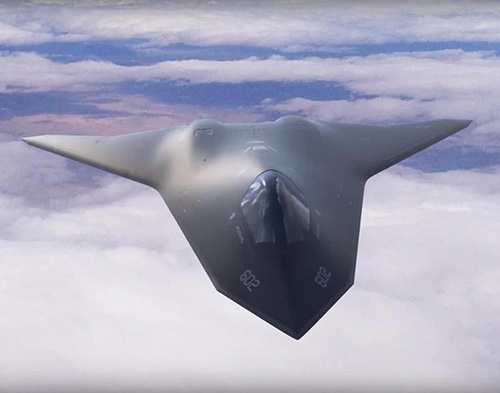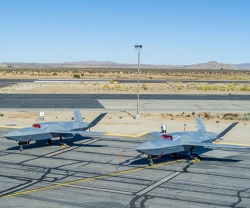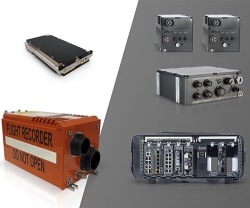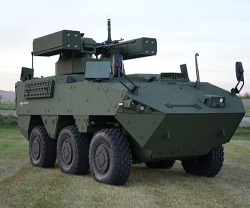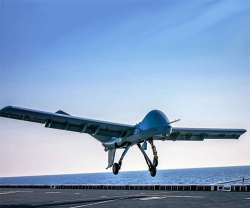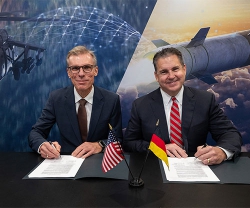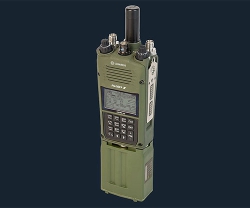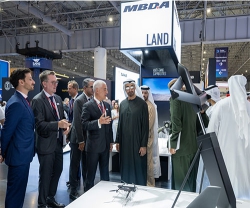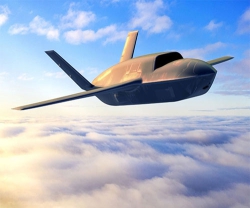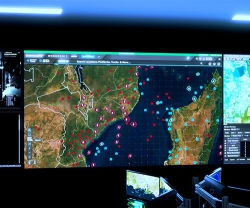Drone fighter jets, hypersonic attack planes, artificial intelligence, lasers, electronic warfare and sensors woven into the fuselage of an aircraft - are all areas of current technological exploration for the US Air Force (USAF) as it begins early prototyping for a new, 6th-Generation fighter jet to emerge in the 2030s and 2040s.
While the initiative, called Penetrating Counter Air, has been largely conceptual for years, Air Force officials say current “prototyping” and “demonstrations” are informing which technologies the service will invest in for the future.
“The Air Force is maturing technologies as well as assessing prototyping and demonstration activities as potential options,” Air Force spokeswoman Capt. Hope Cronin told Warrior Maven.
Current work on a futuristic 6th-gen fighter - to come after and fly alongside upgraded F-35s -- includes development of stealthy drone fighters, hypersonic flight, lasers, new precision weaponry and advanced AI able organize targeting data in milliseconds.
While all of these things are of course key parts of the equation, the Air Force Penetrating Counter Air program is equally focused on information exchange itself as a defining element of future war. Such an approach, looking beyond isolated systems and weapons themselves, envisions expansive “networked” combat with war platforms operating as “nodes” in a larger warfare system of weapons and sensors working together in real time.
“This approach is one that views military operations in terms of wholistic elements of an information-shooter-effector complex. That will require a lot more going into the design of the next generation of combat aircraft than how fast and far it can fly - or what the numbers of weapons it can carry,” Ret. Lt. Gen. David Deptula, former planner of the US air attacks in Operation Desert Storm and current Dean of the Mitchell Institute for Aerospace Studies, told Warrior Maven in an interview.
The program, highlighted in the Air Force’s “Air Superiority 2030 Flight Plan,” envisions what Cronin referred to as a “family of capabilities.”
“We are investing in technologies so we can eventually prototype and gain the knowledge we need to make decisions whether or not to continue with a potential capability,” she added.
Directed by the Air Force Chief of Staff, service weapons developers have been working in Enterprise Capability Collaboration (ECCT) teams designed to pursue next-generation air superiority.
“We are moving into a future where aircraft need to be looked at as not just elements of their own, but as a system of information nodes - sensor - shooter - effectors. It is about creating an entire system of systems that is self-forming and self-healing with a greater degree of awareness than an adversary can achieve, and a much greater degree of survivability,” Deputla said.
Northrop Grumman, Lockheed Martin’s Skunk Works and Boeing’s Phantom Works are all among a handful of industry developers already working on prototype 6th Gen planes and advanced technologies - intended to align with key elements of the Air Force vision. The Air Force itself, while not yet decided upon a particular platform or fixed set of new technologies, is moving quickly beyond the conceptual realm into the active exploration of weapons, sensors, technologies and networks.
Next-generation stealth technology, for instance, is of course a large focus of the technical equation. Newer radar absorbing coating materials, improved IR suppressants or thermal signature management, evolved radar-eluding configurations and acoustic reduction technologies offer a window into current areas of developmental focus. A 2013 Essay by the NATO Parliamentary Assembly Science and Technology Committee discusses the evolution of advanced heat reduction technologies built into the “skin” of an aircraft.
“To become low-observable in multiple spectrums, advanced skins manage a plane’s heat distribution to foil radar, infrared, and thermal detection systems. These skins do this by distorting or eliminating heat distribution to restructure its thermal shape. They may also be able to heat up or cool down all parts of an aircraft’s surface to perfectly match the surrounding atmosphere, making it virtually undetectable,” the report, titled “The Future of Combat Aircraft: Toward a 6th Generation Aircraft,” writes.
The Air Force B-21 Raider, a new stealth bomber expected to emerge in the mid 2020s, is said by developers to incorporate a new generation of stealth - but very few details are available.
Engine development is yet another area of major leap-ahead technological focus, according to the NATO Parliamentary Assembly report. Emerging “Variable Cycle Engines” introduce a third air stream into an engine, which can be controlled by the pilot, the essay explains. The new engines reportedly massively increase an aircraft’s reach, fuel efficiency and speed.
“By opening or closing the third air stream, the pilot can adjust the fuel intake of the jet engine and optimize its performance,” the report states.
Fighter-jet launched laser weapons, expected to be operational by the mid 2020s, are of course part of the planning for 6th-Generation fighters.
Targeting and sensor technology, coupled with advanced guidance systems, are progressing so quickly that ships, fighter jets and land assets can no longer rely upon an existing threat envelope. Simply put, all US military systems will increasingly become more vulnerable as enemies acquire more drones, high-speed fighter jets and longer-range precision weaponry - all enabled by AI-fortified long-range sensors and targeting technology. This includes the emergence of advanced enemy fighter jets, ships, ballistic missiles and weapons such as land-based anti-ship missiles, all further necessitating the need for information and combat awareness in warfare.
The pace of advancement in computer processing speeds, miniaturization and AI also promise to bring new things to air combat. Algorithms able to instantly gather, compile and organize ISR data and perform real-time analytics will bring faster targeting and attack systems to fighters. AI-enabled real time analytics will, for instance, bring an ability to compare new sensor information against vast databases of relevant data in milliseconds.
Information dominance, therefore, could among other things enable a fighter jet to both launch attacks and also function as an aerial ISR node. Operating as part of a dispersed, yet interwoven combat sensor network, a fighter could transmit combat relevant data to air assets, ground-based weapons, command and control centers, Navy ships and satellites.
Current work on a futuristic 6th-generation fighter - to come after and fly alongside upgraded F-35s -- includes development of stealthy drone fighters, hypersonic flight, lasers, new precision weaponry and advanced AI able organize targeting data in milliseconds.

